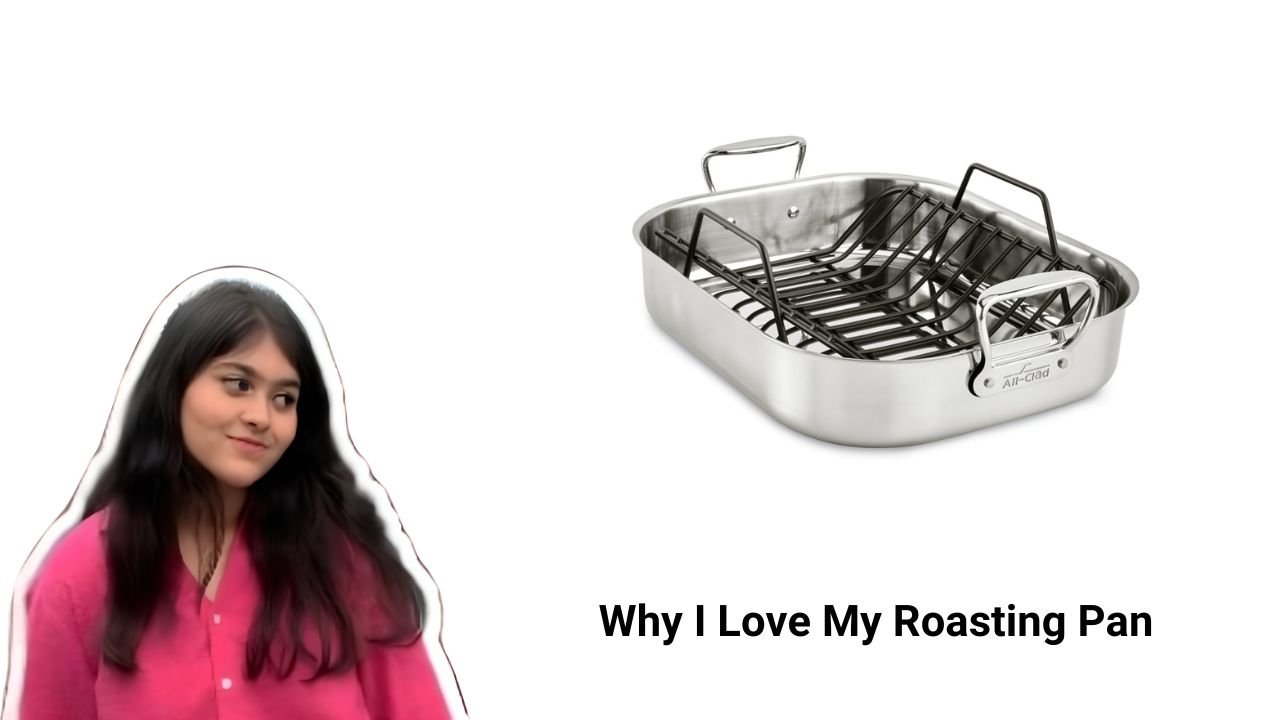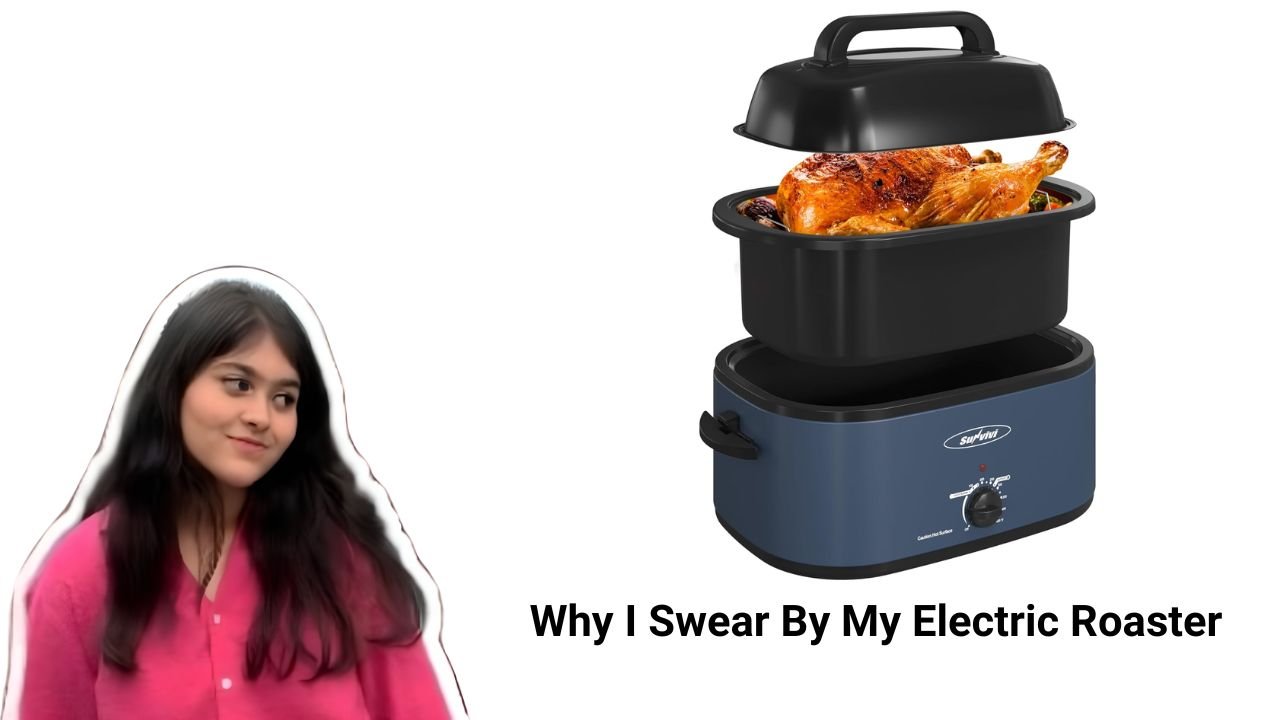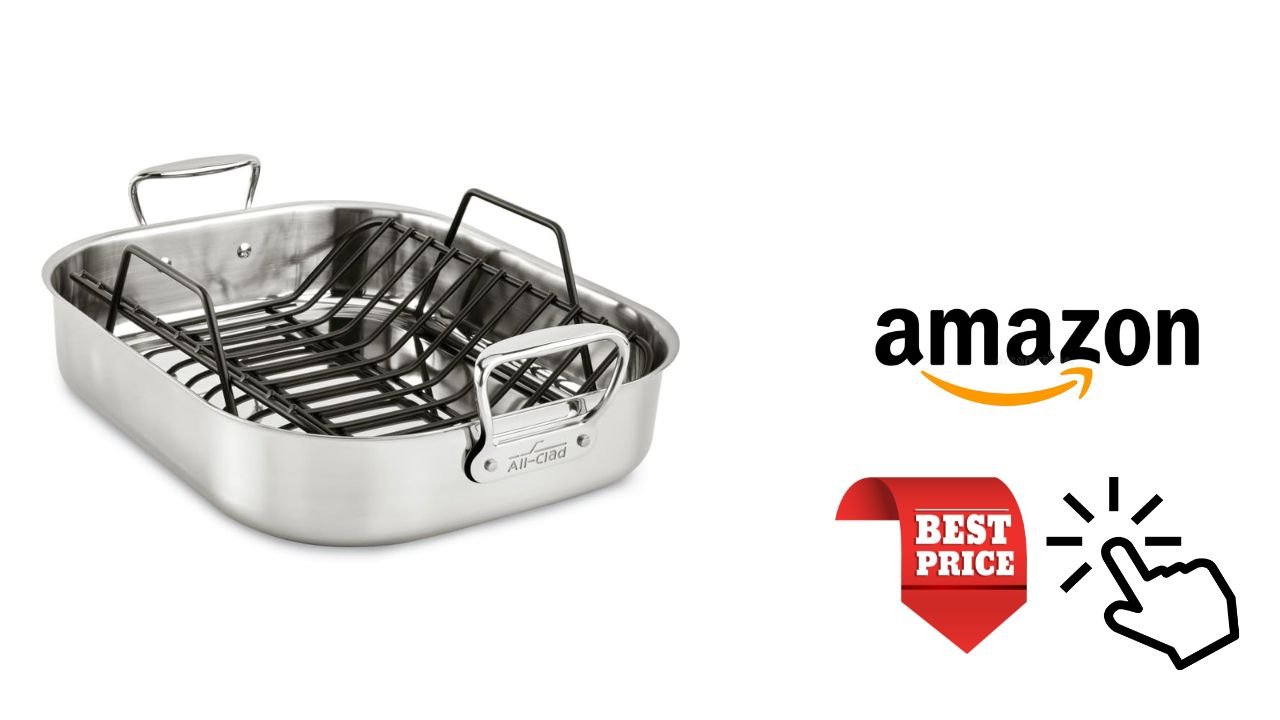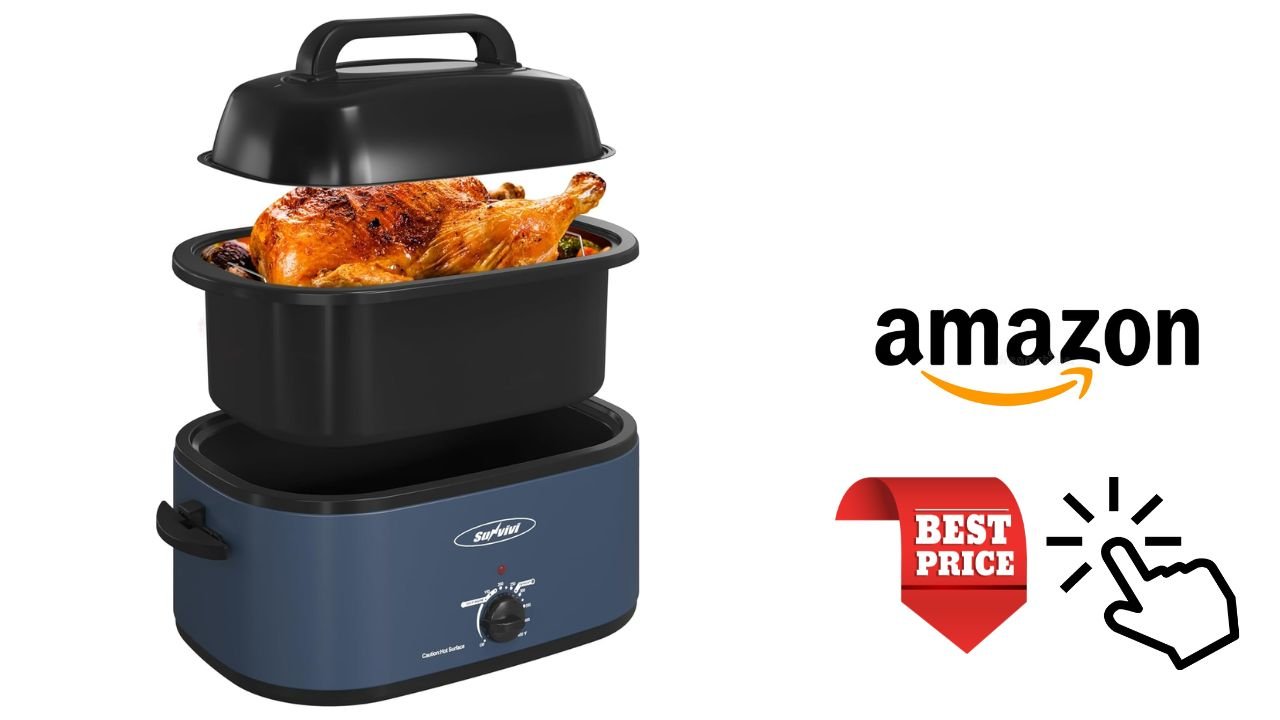The choice between a Roasting Pan vs Electric Roaster depends on your needs—roasting pans suit smaller meals, while electric roasters are ideal for large gatherings and efficient cooking.
When it comes to preparing big meals, especially around the holidays, the choice between a roasting pan and an electric roaster can feel like a high-stakes decision. I’ve cooked with both, and each has its unique advantages and quirks. In this guide, I’ll share what I’ve learned from using these kitchen tools to help you determine which one is the perfect fit for your needs.
Why the Right Cooking Tool Matters?
Cooking large meals, like Thanksgiving turkey or a holiday roast, can be both exciting and daunting. The tools you choose can make or break your culinary experience. Over the years, I’ve tested both a roasting pan and an electric roaster, and let me tell you, each has its own merits. While one is a classic kitchen essential, the other feels like a modern marvel designed for convenience.
This article will delve into the pros, cons, and key differences between these two options, offering you the insights you need to make an informed choice.
What is a Roasting Pan?
A roasting pan is a large, rectangular pan designed for use in the oven. It’s perfect for roasting meats, poultry, and vegetables. Most roasting pans are made of durable materials like stainless steel or cast aluminum, and many include a rack to elevate the meat for better airflow and even cooking.
Why I Love My Roasting Pan
- Durability: My stainless-steel roasting pan has been my kitchen companion for years. It’s built to last and has withstood countless meals.
- Versatility: I’ve used it not just for roasting but also for baking casseroles and lasagna. Some roasting pans even work on the stovetop for making gravy.
- Perfect for Browning: Oven roasting gives you that crispy skin and caramelized surface you can’t achieve with a lid-covered appliance.
Downsides of Roasting Pans
- Heavy When Loaded: A large pan with a turkey inside can be cumbersome.
- Storage Issues: They take up a lot of cabinet space, especially in smaller kitchens.
- Dependent on Oven: You can’t use a roasting pan without an oven, which limits your flexibility during large meals.
What is an Electric Roaster?
An electric roaster is a portable countertop appliance that cooks food using built-in heating elements. It functions as a mini-oven and is ideal for large gatherings when oven space is limited.
Why I Swear By My Electric Roaster
- Time-Saving: My roaster preheats quickly and cooks faster than my oven.
- Space-Saving: It frees up my oven for other dishes, which is a lifesaver during holidays.
- Consistent Results: The built-in heating provides even cooking, keeping meats moist and juicy.
- Multi-Functionality: Beyond roasting, I’ve used mine to bake, slow-cook, and even keep food warm.
Drawbacks of Electric Roasters
- Bulky Design: It requires significant counter and storage space.
- Cleaning Can Be Tedious: While the removable pan helps, cleaning the lid and heating element is a bit of a hassle.
- Limited Capacity for Large Crowds: For gatherings of 30+ people, you might need multiple roasters.
Roasting Pan vs Electric Roaster: Key Comparisons
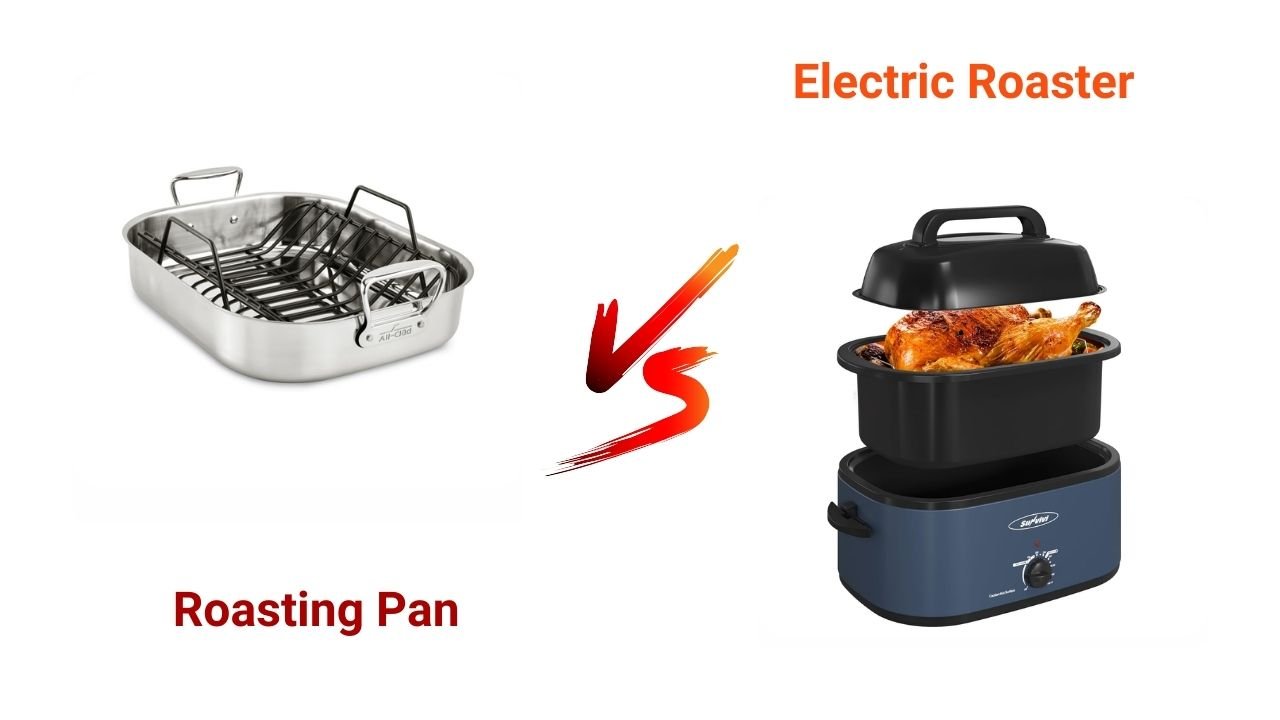
Here’s a side-by-side comparison of the two tools based on my experience:
| Feature | Roasting Pan | Electric Roaster |
|---|---|---|
| Heat Source | Relies on oven heat | Built-in electric heating |
| Cooking Time | Slower, depends on oven | Faster due to efficient heating |
| Capacity | Medium to large | Large (up to 24 lbs) |
| Portability | Limited to oven use | Portable, plug-and-use anywhere |
| Energy Efficiency | High oven energy consumption | More energy-efficient |
| Ease of Cleaning | Dishwasher-safe for most | Requires manual cleaning |
When to Choose a Roasting Pan
Best For:
- Smaller meals and occasional roasting.
- Those who prefer the crispiness and browning achieved in an oven.
- People with enough oven and storage space.
Pro Tips:
- Invest in Quality: Choose stainless steel or cast aluminum for durability.
- Rack it Up: Always use a rack for even cooking and to avoid soggy bottoms.
- Know Your Size: Match the pan size to your oven and the meal you’re cooking.
When to Choose an Electric Roaster
Best For:
- Holiday meals or medium-sized gatherings.
- Anyone needing to save oven space.
- Home cooks looking for versatility (roasting, baking, slow-cooking).
Pro Tips:
- Preheat Properly: Always preheat your electric roaster to ensure even cooking.
- Monitor with a Thermometer: Use a meat thermometer to avoid overcooking.
- Line the Pan: Lining the insert with foil makes cleanup a breeze.
My Personal Experiences: A Tale of Two Tools
I’ve had successes and challenges with both tools. Last Thanksgiving, I cooked a 15-pound turkey in my roasting pan, and while the crispy skin was divine, juggling oven space for other dishes was a nightmare. On the other hand, using my electric roaster the following year freed up my oven for sides and desserts, though I missed the caramelized finish the oven provides.
One summer, I used my electric roaster to slow-cook brisket for a family reunion. The tender, flavorful results were a hit, but cleaning the roaster afterward was time-consuming. For everyday meals, my roasting pan remains my go-to, especially for roasted veggies and lasagna.
Read More: Roasting Pan vs Dutch Oven: What Works Better?
FAQs About Roasting Pan vs Electric Roaster
What’s the biggest difference between a roasting pan and an electric roaster?
A roasting pan relies on your oven, offering crispy and browned results, while an electric roaster is a standalone appliance that cooks more evenly and quickly.
Which is better for large meals?
An electric roaster is better for large meals, thanks to its capacity and ability to free up oven space.
Are electric roasters energy-efficient?
Yes, they use less energy than an oven, making them both cost-effective and environmentally friendly.
Can you achieve crispy skin with an electric roaster?
Not quite. The moist heat in a roaster doesn’t produce the same crispness as an oven.
What size roasting pan or roaster should I buy?
Choose based on your needs—a 16-quart roasting pan is great for medium-sized meals, while an 18-22 quart electric roaster handles larger turkeys.
Do I need a roasting rack?
For roasting pans, a rack ensures even cooking and prevents sogginess. Electric roasters often don’t need one due to their design.
How do I clean an electric roaster?
Remove the pan insert and wash it with warm, soapy water. Line it with foil during cooking to simplify cleanup.
Which is more versatile?
An electric roaster is more versatile as it can roast, bake, slow-cook, and keep food warm.
Final Thoughts: Choosing the Right Tool for Your Kitchen
Both the roasting pan and the electric roaster have their unique strengths. If you prioritize traditional roasting with crispy results and don’t mind using your oven, a roasting pan is a classic choice. However, if you often cook for large gatherings and need to free up oven space, an electric roaster is your holiday MVP.
Ultimately, the choice comes down to your cooking style, kitchen space, and the meals you love to prepare. For me, having both tools ensures I’m ready for any occasion, big or small.

Hey, I’m Nandoza Ahammad, passionate food enthusiast and creator of narzcookingcave.com, shares delicious recipes and cooking tips worldwide.

